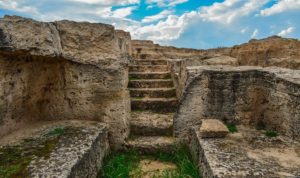Botany could be described as the plant life, or properties and life phenomena exhibited by plant type or plant group or we can say generally that it is the study of the plant. Plants are all over the world are important to human life because we get food from them as plant crop, they give us oxygen and a whole lot of other functions.
Remote sensing is the acquisition of getting information or data about an object without direct contact with them. This system is applied to solve issues that will be almost impossible to solve with other methods or hectic. Remote sensing and geographic information system (GIS) are powerful technologies that will help in the study of plants, their properties, problems, and solutions
Species form and their distribution is a case study that has a lot to know and understand. Shortly, I will give us a few applications of remote sensing in botany. This technology in acquaintance with GIS has helped to solve issues concerning plants and their distribution in the world.
1. Vegetation Mapping
With remote sensing, the vegetation of areas can be determined, that is, the height of trees, canopy size, density, and others. With this, different vegetation types can be categorized and classified depending on their physical characteristics.
This process of vegetation mapping is a hectic one if done with other methods, but through remote sensing, satellite images would be taken whether on a large or small scale land area to determine if that vegetation area is ok and productive. Through these images, a less productive vegetation area would be restored to normal by plant scientists through various treatments until the vegetation is in a good state.
2. Inventory of medicinal plants
In most vegetation or tropical areas, crop plants that are beneficial to humans and animals are cut down without fully knowing their functions. Remote sensing technology shows us an easy way to locate medicinal plants and use them for their rightful purpose.
Remote sensing helps us to overcome the manual way of an inventory of plants that is usually hectic and stressful. With remote sensing, a medicinal plant can be located in large vegetation easily unlike the application of normal inventory practices.
3. Taxonomy
Taxonomy, as we know, is the classification of plants into a hierarchical system. It could also be said to be the science of finding, describing, classifying and naming organisms. With these two definitions, we understand that taxonomy involves orderliness and carefulness which remote sensing is the best in doing that.
Remote sensing in correlation with GPS allows taxonomists to arrange these plants to their specific locations and class. The widely known and popular way of classifying plants is when the taxonomist goes to the field to seek knowledge of plant specimens that are present, absent, or have gone extinct. Species distribution model (SDM) is a good remote sensing technique that helps to tell of species distribution or population in a particular area of occurrence.
With remote sensing, it will be known quickly and easily if a particular species is about to go extinct or is being threatened by a pest. There are a lot of remote sensors out there which helps taxonomist in their work so they can be fast, efficient and accurate with their findings.
4. Plant health
The application of remote sensing in plant health is very significant and something to push out for always. Crop plants are prone to disease and pest attacks and could become so critical when not observed and treated at that point. In the early years, the whole crop plant area is surveyed to see the best and the poor performing plants.
It was, however, stressful because the plant area is large could take days to survey the whole plant area, but with the introduction of remote sensing imagery, data is taken on time and crop diseases are detected with no time to waste. Hyperspectral cameras have come in place to detect these diseases for effective treatment.
This remote sensing method is less time and cost demanding, that is if the right techniques in identifying these diseased plants are followed. With the advancement in technology, these diverse plants are monitored to make sure they don’t contact disease over the years until they are used.
5. Supervision in land degradation
Remote sensing helps to monitor or supervise possibilities of land degradation. With this new technology, future land degradation would be seen and prevention mechanisms will be taken to overcome that issue.
There are several times that different land actions affect the outcome of the land in the future which will affect the growth of plant species. So with remote sensing, it will be observed on time and land activities like deforestation and bush burning would be avoided in other not to put the land and its plant in danger.
6. Soil suitability
If the soil is very poor, the production of crop plants would also be poor. Application of remote sensing in the area of soil suitability for plants will help both botanist and agriculturist to plant their crops in the best suitable soil.
With its satellite images and sensors, effective and fast surveys would be carried out on a vacant piece of land to make sure it is fit for plant growth. Manual reconnaissance surveys of these land areas are usually not accurate and could prove to be wrong at the end, so the application of remote sensing is best accurate for surveys.
In conclusion, remote sensing has proven to be a better technology in botany and its effect will not only lead to better plant production now but also in the future. However, most countries in the world that are underdeveloped would find it difficult to get access to this high-class technology.
A forum should be set up in which countries that have limited access to remote sensing be helped to get access because it will be better for the world as a whole. Also, an enlightenment program should be set up to create awareness on the importance of remote sensing in today’s world.



